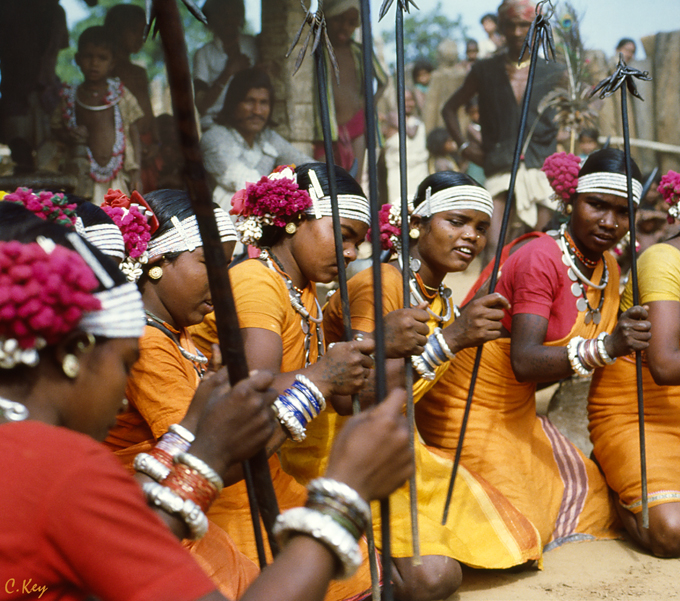With general elections around the corner and a ‘vote on account’ budget, a reflective reading of the budget is required to understand where the priorities of the current government lie. Ensuring sufficient allocations of schemes and public entitlements to Adivasis and Dalits and thereby correcting historical injustices to these marginalised groups is not one of them.
The estimates presented by finance minister Nirmala Sitharaman for FY 2024-25 for Social Justice and Tribal Affairs Ministries remained largely unchanged and see a marginal increase of 1% in its allocation across all schemes for STs. From Rs 1,19,795.67 crores allocated in the 2023-24 budget, it has increased to just Rs. 1,21,022.85 crore in the current budget. There are also often repeated cases of underutilisation of funds in the given fiscal year. For instance, the Revised Estimates for 2023-24 reveal that expenditures reduced by 23% and 38% for the Social Justice Ministry and the Tribal Affairs Ministry respectively.
It shows that the Ministry of Social Justice was not able to spend the budget allocated to the SEED scheme, while the tribal affairs ministry fell short of spending on its flagship project Eklavya Model Residential Schools (EMRS). The revised estimates for the SEED scheme for 2023-24 are only Rs 15 crore although the allocation was Rs 40 crore. Whenever there are large revisions in the budget, it not only affects the credibility of numbers presented in the budget, but the downward revisions, in particular, can be unfavourable for beneficiaries who are likely to receive fewer benefits and the benefits may also get restricted to fewer people.
The SEED scheme was launched in February 2022 for the economic empowerment of Denotified (DNT), Nomadic (NT) and Semi-nomadic tribes (SNT). The scheme aims to provide livelihood support, health insurance, assistance for housing, and competitive exam coaching. Though quite comprehensive in its scope, the scheme has failed to deliver. While the Social Justice ministry received nearly 5,400 online applications for availing the benefits under the scheme, none of the applications had been approved on the portal citing reasons of tribe categorisation into SC, ST and OBCs for the delay in implementation. Looking at the under-utilisation of funds, it appears that not much improvement has happened on that front.
PM Narendra Modi in his Lok Sabha address on February 5 claimed that his government has taken up the welfare of the most vulnerable people of the country on a mission mode. The prime minister took credit for recognising the Particularly Vulnerable Tribal Groups (PVTGs) who are otherwise rendered invisible in the vote bank politics due to their small numbers in the population. He referred to the introduction of the PM JANMAN scheme as a testimony of his government’s commitment to the cause of tribal welfare. However, the recent allocations in the interim budget 2024-25, do not match these claims and certainly do not the findings of various reports on the socioeconomic status of the marginalised groups.
According to the Tribal Development Report, 2022, the first of its kind since independence, Adivasis are at the bottom rung of India’s development pyramid. The National Family Health Survey-5 (2019-21) clearly indicates that over 70 per cent of Scheduled Tribes lie in the lowest quintiles. Likewise, the Ministry of Tribal Affairs (MoTA) in its 2021-22 Annual Report reveals that over 45% of STs were living below the poverty line in rural areas and over 25% in urban areas.
It would, therefore, make better sense to look at development indicators such as education, health and nutrition as analytical screens against absolute budget numbers or percentage increases under various schemes for these marginalised sections of society.
According to NHFS-5, the median years of schooling completed for STs was a mere 5.2 as compared to 8.5 of the socially dominant ‘other’ category. Likewise, the school attendance ratio (65.1%) was the lowest for STs in the middle, secondary and higher secondary education sector. The Union Budget 2024-25 remains flat-footed in assessing the educational needs of these communities with a discernable reduction in budget allocation for scholarships and fellowships. For instance, the PM Research Fellowship under AWST witnesses a decrease from Rs. 34 crores to Rs. 30 crore, and Rs. 30 crore under AWST, down from Rs. 34 crore. The overall budgetary allocation on education needs to be brought in line with the recommendations of National Education Policy 2020 which advocates 6% of GDP to be spent on the sector. This comes to Rs 19,66,309 crore, but in the current budget, education was allocated Rs 1,24,638 crore. The interim budget 2024-25 shows no effort has been made to ensure quality education for all.
Inclusive development cannot be achieved without securing the health and nutrition needs of the Scheduled Tribes. The infant mortality rate for Scheduled Tribes was over 41 compared to 28 for all; the under-five mortality rate was 50 for Scheduled Tribes and 33 for all, according to the NFHS-5.
The Rural Health Statistics (2021-22) revealed a shortfall of 9357 sub-centres, 1559 primary health centres and 372 community health centres in tribal areas against the required numbers as on March 31, 2022. NFHS-5 also reports the Nutritional Status of Children and revealed that over 40% of ST children were stunted, 23% were wasted and about 39 were underweight compared to ‘Other’ communities at 30%, 17.5%, and 27%, respectively.
Given the depravity of the educational and health conditions of these marginalised sections of society, the interim Union Budget 2024-25 is a statement of apathy and indifference beneath the claims of inclusivity.
K.C. Adaina and Divya Pradeep teach Economics at Azim Premji University and Christ University, Bangalore, respectively.









